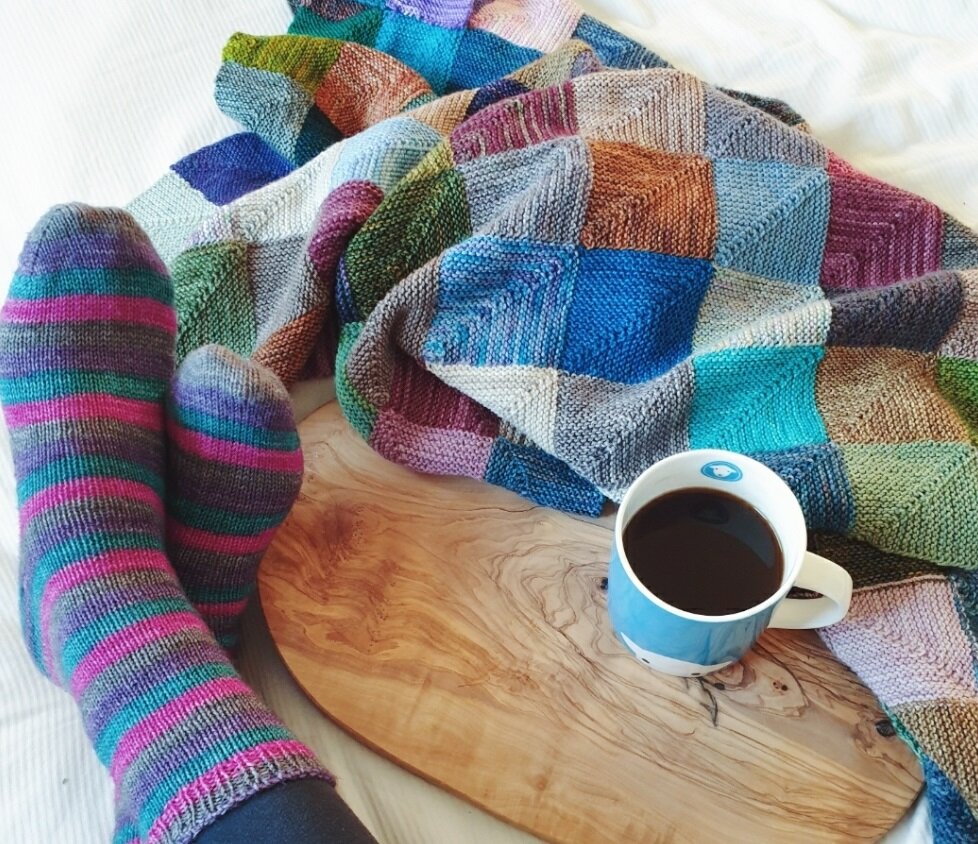It's OK not to not feel like knitting
It's OK to not feel productive
It's OK to just sit and look out of the window
I don't know about you but I'm feeling overwhelmed by the smallest things right now. Not least the plethora of adverts and messages on social media telling me now is the perfect time to learn a language or do that course.
Turns out that no, it really isn’t
I'm having a hard enough time keeping it together in front of the kids, doing all the usual mum stuff and getting our house ready for who knows how many weeks of two adults and two kids working from home in a small 3 bed semi.
Mercifully my temperature blanket has become my knitting of choice right now. Absolutely no need to think, plan or wind yarn. Just sit down and knit in the allotted colour for the day.
Who knew at the start of the year that my blanket would be something I actively enjoy working on. I thought I'd have reached the tedium stage by now but it turns out that’s exactly what my brain needs.
I'll be ignoring all marketing emails and unsubscribing from anything that tells me "now is the perfect time to..."
Unless of course it is "now is the perfect time to prune your social media and eliminate all unnecessary crap"











